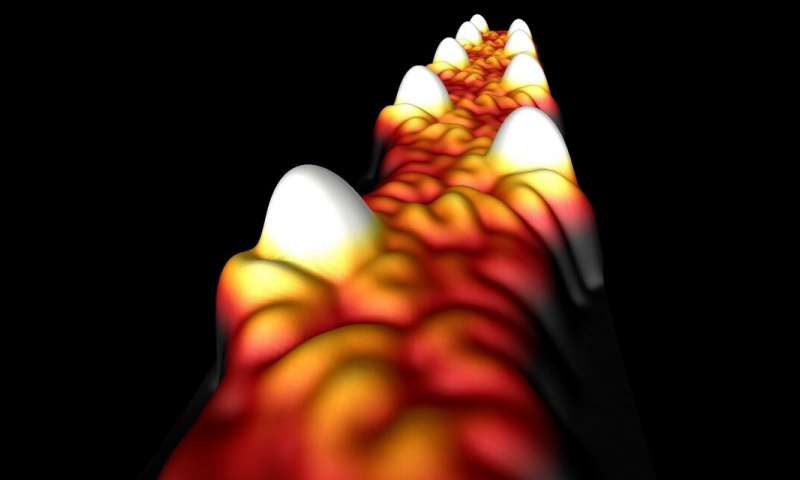HOME
Metal wires of carbon complete toolbox for carbon-based computers

Scanning tunneling microscope image of wide-band metallic graphene nanoribbon (GNR). Each cluster of protrusions corresponds to a singly-occupied electron orbital. The formation of a pentagonal ring near each cluster leads to a more than tenfold increase in the conductivity of metallic GNRs. The GNR backbone has a width of 1.6 nanometers. Credit: UC Berkeley / Daniel Rizzo
Transistors based on carbon rather than silicon could potentially boost computers' speed and cut their power consumption more than a thousandfold—think of a mobile phone that holds its charge for months—but the set of tools needed to build working carbon circuits has remained incomplete until now.
A team of chemists and physicists at the University of California, Berkeley, has finally created the last tool in the toolbox, a metallic wire made entirely of carbon, setting the stage for a ramp-up in research to build carbon-based transistors and, ultimately, computers.
"Staying within the same material, within the realm of carbon-based materials, is what brings this technology together now," said Felix Fischer, UC Berkeley professor of chemistry, noting that the ability to make all circuit elements from the same material makes fabrication easier. "That has been one of the key things that has been missing in the big picture of an all-carbon-based integrated circuit architecture."
News Source